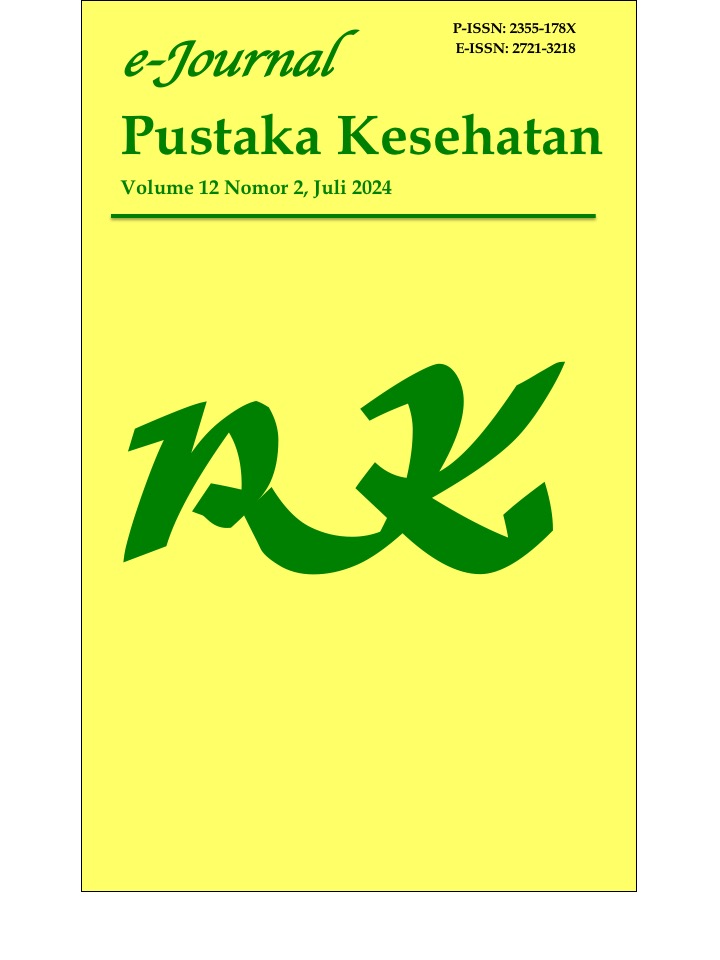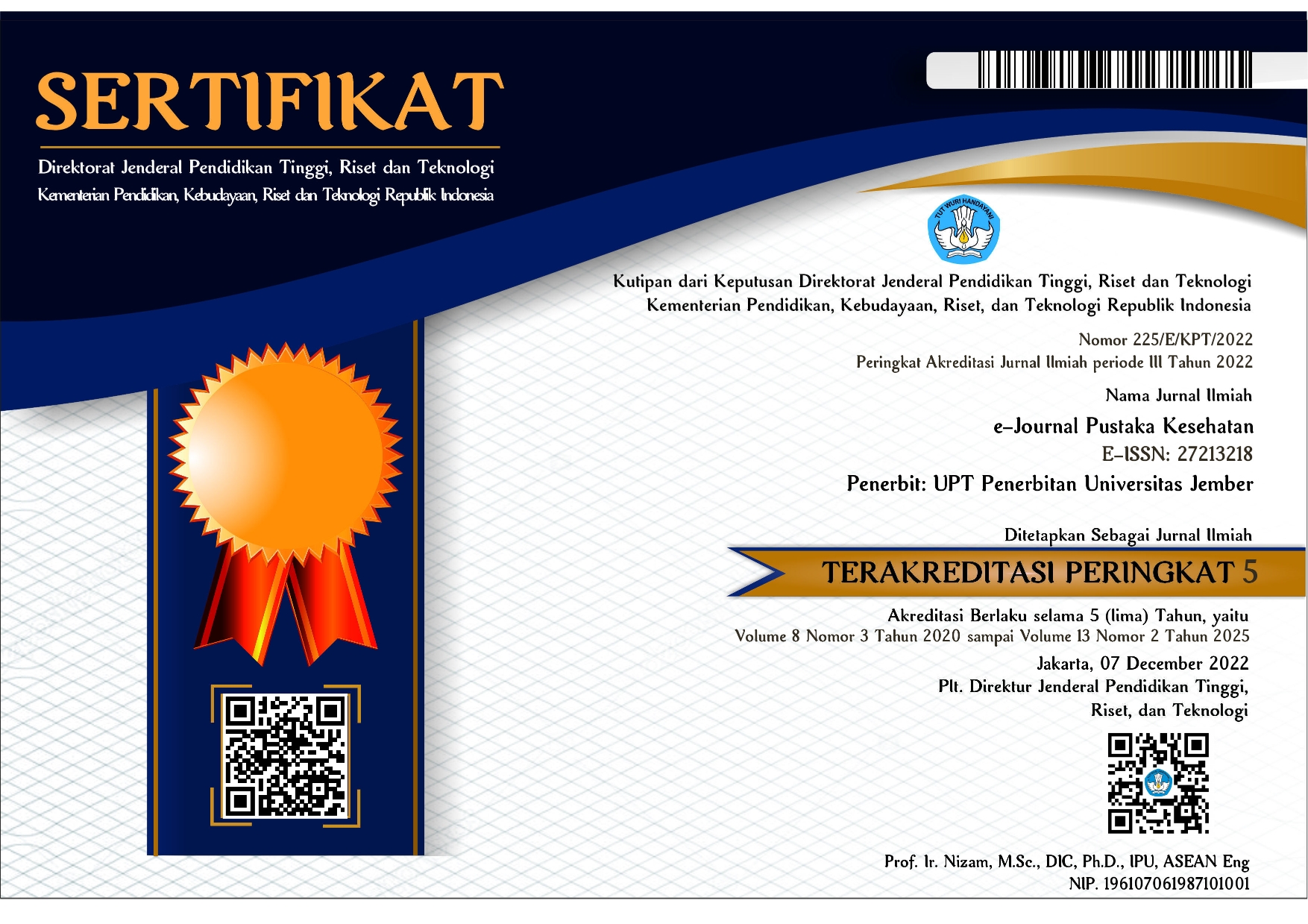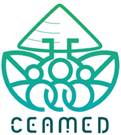Gambaran Pola Konsumsi Mie Instan Anak Sekolah Dasar pada Keluarga Petani di Wilayah Desa Sumberagung-Jember
Abstract
Giving frequently instant noodles to children will form a habit, making children only want to consume instant noodles. Consuming instant noodles twice or thrice a week increase risk of cardiometabolic syndromes such as heart disease, stroke and diabetes which are the common causes of death worldwide. This study aimed to describe the pattern of instant noodle consumption among elementary school children of farmer families in Sumberagung Village, Jember Regency. The study used a quantitative descriptive design with a sample of 58 elementary school age children grades IV, V, VI who were selected using purposive sampling technique. Data were collected using a Food Frequency Questionnaire (FFQ). The result showed that the consumption pattern of Instant Noodles for elementary school children in farming families was in the category of 3-6x/week, >3x/day, 1x/day, and 1-2x/week were 43.1%, 17.2%, 31%, and 8.6%, respectively. This study concluded that the consumption pattern of instant noodles among elementary school children in farmer families in Sumberagung Village, Jember Regency is in a dangerous risk for health. Therefore, it is expected that health workers improve education on Balanced Nutrition Messages (PGS), so that farmer families, especially mothers can prepare healthy, safe and nutritious meals for children and their families.
References
[2] Gupta BK. Assessment of Lifestyle And Habits Associated With Obesity Among The School Children of Bhirahawa, Nepal - A Cross Sectional Survey. Journal of Advanced Medical and Dental Sciences Research. 2015. 3(6): 107-110.
[3] Fagundes AA, Silva TC, Voci SM,. Santos FD, Barbosa KBF, Correa AMS. Food and Nutritional Security of Semi-Arid Farm Families Benefiting From Rainwater Collection Equipment in Brazil. PLOS ONE. 2020. 15(7): 1-14.
[4] Silva NR, Oliveira AGS. Eating Practices Of Family Farmers In The Municipality of Petrópolis-RJ, Brazil. Demetra: food, nutrition & health. 2018. 13(4): 925-936.
[5] Nurwitasari A, Wahyuni CU. The Effect of Nutritional Status and Contact History toward Childhood Tuberculosis in Jember. Jurnal Berkala Epidemiologi. 2015. 3(2): 158-169.
[6] Lestari W, Kristina L, Paramita A. Stunting: Studi Konstruksi Sosial Masyarakat Perdesaan Dan Perkotaan Terkait Gizi Dan Pola Pengasuhan Balita Di Kabupaten Jember. Aspirasi: Jurnal Masalah – Masalah Sosial. 2018. 9(1): 17-33.
[7] Ratnasari DK, Wirawan Y. Gambaran Kebiasaan Konsumsi Mie Instan Pada Anak Usia 7-12 Tahun Studi di Sekolah Dasar Kanisius Tlogosari Kulon Semarang Dewi. Journal of Nutrition College. 2012. 1(1): 86-92.
[8] Kencana D. Pengaruh Mie Instan Bagi Kesehatan Anak Kos Di Jalan Garuda Induk, Kec. Padang Utara, Kota Padang. INA-Rxiv Papers. 2019. 1(1): 1-10.
[9] Mas’udah N. Mie Sehat Sebagai Usaha Pengereman Impror Terigu dengan Menggunakan Bahan Substitusi Alami. Pasuruan: Lembaga Academic & Research Institiute. 2020.
[10] Wiradnyani LAA, Pramesthi IL, Raiyan M, Nuraliffah S, Nurjanatun, Gizi dan Kesehatan Anak Usia Sekolah Dasar: Buku Pegangan dan Kumpulan Rencana Ajar untuk Guru Sekolah Dasar. Jakarta: SEAMEO REFCON, Kemendikbud RI. 2016.
[11] Cindy BPIR, Suyatno, Fatimah SP. Hubungan Konsumsi Mie Instan Dengan Status Gizi Pada Balita Usia 24 – 59 Bulan Di Desa Jamus Kecamatan Mranggen Kabupaten Demak, Indonesia Tahun 2015. Jurnal Kesehatan Masyarakat. 2016. 4(2): 29-37.
[12] Festi WP. Buku Ajar Gizi dan Diet. Surabaya: UM Surabaya Publishing. 2018.
[13] Prasetyo F, Jumakil, Sidiq NM.. Prosiding Seminar Nasional Kesehatan: Penguatan dan Inovasi Pelayanan Kesehatan dalam Era Revolusi Industri 4.0. Kendari: UHO Edu Press. 2019.
[14] Rencana Program Investasi Jangka Menengah Bidang PU/ Cipta Karya. Profil Kabupaten Jember. Jember. 2018.
[15] Noviani K, Afifah E, Astiti D. Kebiasaan jajan dan pola makan serta hubungannya dengan status gizi anak usia sekolah di SD Sonosewu Bantul Yogyakarta. Jurnal Gizi dan Dietetik Indonesia. 2016. 4(2): 97-104.
[16] Risyanu FNI, Adiyasa N, Laraeni Y. Preferences and Instant Noodles Consumption of the Department of Nutrition and Health. Prime Nutrition Journal. 2016. 1(1): 1-8.

This work is licensed under a Creative Commons Attribution-ShareAlike 4.0 International License.
e-Journal Pustaka Kesehatan has CC-BY-SA or an equivalent license as the optimal license for the publication, distribution, use, and reuse of scholarly work. Authors who publish with this journal retain copyright and grant the journal right of first publication with the work simultaneously licensed under a Creative Commons Attribution-ShareAlike 4.0 International License that allows others to share the work with an acknowledgment of the work's authorship and initial publication in this journal.











